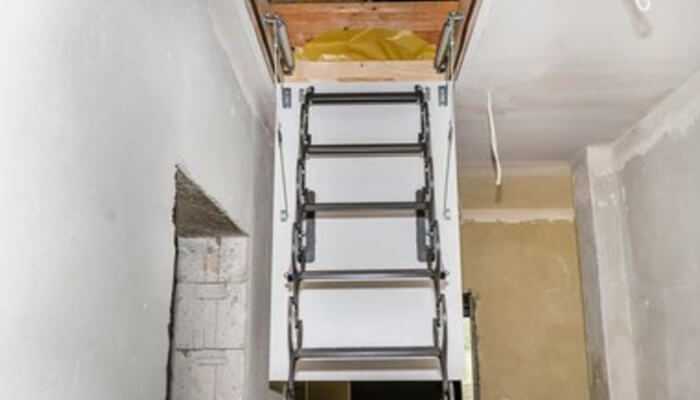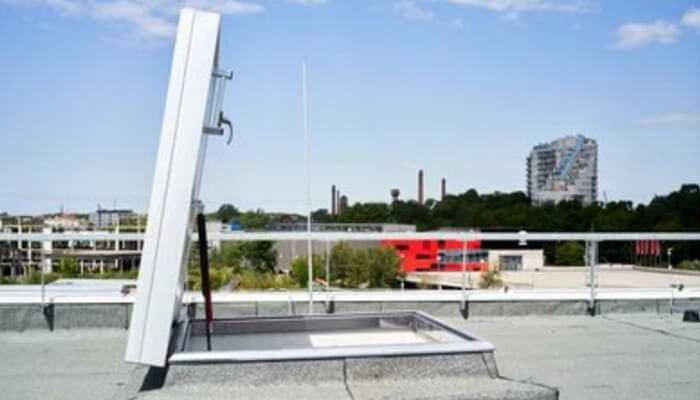When you think about buildings that look really nice—like fancy offices, big hotels, or cool airports—you probably notice the lighting, the floors, maybe the furniture. What you don’t usually notice is all the stuff keeping that building safe and working right behind the scenes. And honestly, that’s the point. Because in today’s architecture, safety and style don’t have to fight.
People used to think you had to choose: make a place look good, or make it strong and safe. But modern buildings don’t work like that anymore. Now, you can have both. The trick is in how everything’s designed to blend in.
Making Safety Invisible (On Purpose)
Take fire safety stuff, for example. You need it in every big building, but no one wants to see huge signs, awkward doors, or boxes sticking out everywhere. So designers hide them in smart ways—like putting sprinklers up in the ceiling or making smoke vents that sit flush with the roof until they’re needed.
Even escape ladders can be hidden now. Instead of clunky metal ladders just hanging on a wall, some places use fold-away systems that stay out of sight but are easy to pull down if something goes wrong.
Another example is how people get into the parts of the building most of us don’t even think about—like under the floors. These areas are where cables, pipes, and tech systems run. Instead of having big panels or holes everywhere, a lot of buildings use architectural recessed floor hatches. These hatches sit flat with the floor and can be covered with the same material as the flooring, so they totally blend in. They’re easy to lift if needed, but they don’t mess with the way the room looks.
Clean Layouts, Clear Paths
Have you ever been somewhere that just felt… crowded? Not because of people, but because there were boxes in the way, random pipes, or weird raised bits in the floor? That’s usually a sign of poor planning.
A well-designed building makes movement feel easy. Emergency exits are easy to find but not screaming at you. There’s space to walk, even during busy hours. Service equipment like HVAC units or power panels are tucked out of sight but still reachable when someone needs to fix them.
The goal is simple: make the building work well for both the people using it and the people maintaining it—without making it look like a construction zone.
When Style Gets in the Way (and How to Avoid That)
Okay, so yes—sometimes people go a little too far trying to make a place look cool. They might cover up vents, hide access points behind things that are hard to move, or choose flooring that’s too fragile for equipment.
That’s where good planning comes in. Architects work with engineers to figure out how to make everything fit together. It’s kind of like designing a video game level—what looks easy to play usually takes a ton of thought.
They ask things like:
1. Where do workers need to get into the ceiling or floor?
2. Can emergency gear be hidden but still easy to grab?
3. Will the flooring handle heavy tools?
4. Can access points be made invisible without making them hard to use?
When they get it right, nobody notices anything is missing—because it’s not.
Small Details That Make a Big Difference
Here’s something cool: a lot of the smartest safety features in buildings are things you’ll never see unless you’re looking for them.

Like:
1. Hinged floor panels that blend into tiles or concrete
2. Stairways with built-in handrails that fold up
3. Lighting systems that guide people out during power outages
4. Wall panels that pop open to give access to wiring or plumbing
Even the way doors swing matters. Some places use flush handles and door closers that don’t stick out, so people can move around more easily—especially in emergencies.
These things might seem small, but they all add up to a place that works better without looking messy.
People Notice When Things Go Wrong
Most of the time, no one thinks about recessed hatches or smoke vents or cable trays. But if they’re missing—or designed badly—you notice fast.
Maybe a hallway floods because a drain was hidden behind furniture. Or someone can’t reach a fire panel during an emergency. Or a technician has to rip up a fancy floor just to fix a wire.
That’s why smart buildings make safety and style work together from the start. They don’t treat safety like something to hide. They treat it like something that just fits in.
Designing for Everyone Who Uses the Building
It’s easy to forget that buildings aren’t just for visitors. They’re also for the people who clean them, fix things, do inspections, or run the tech systems. Those people need to be able to reach stuff fast—and safely.
So while a visitor might notice a clean floor or a cool ceiling, a facilities team will notice how well those things are planned. Can they get under the floor without breaking anything? Can they check the wiring without moving ten pieces of furniture?
If the answer is yes, that’s a sign the building was designed the right way.
The Bottom Line
Safety and style don’t have to fight. In fact, the best buildings make them work together so well you barely notice either one. They’re clean, smart, and built for real people—not just for looks.
The goal isn’t to hide safety. It’s to make it part of the design from the beginning. That’s how you get spaces that feel great to be in—and still work when it counts.



